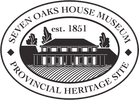Starts: Le Musée de Saint-Boniface Museum
Tour Length: 11 km (19 km return)
Introduction
This tour will take you to some of the oldest site’s in Winnipeg’s history, stretching from 1812-1870. We’ll be following the Red River, which is truly the heart of our city. In fact, Winnipeg’s original name was the Red River Settlement.
This river was the hub for all inland trade, and for the valuable furs that would be shipped north to Hudson’s Bay for sale in Europe. The rivers also dictated settlement patterns and the shape of our city.
St. Boniface, Point Douglas, and (West) Kildonan were some of the most important communities during the Red River Settlement period. Although their histories are deeply intertwined, each area had its own ethnic, cultural and political dynamics. St. Boniface was the heart of early french settlement in Manitoba, and is one of the largest French-Canadian centers outside of Quebec. It quickly became a center for Metis settlement and political organization.
Tour Stops
1 – Le Musée de Saint-Boniface Museum

This former Convent is the second oldest building left Winnipeg, and is by far the largest example of Red River Frame style architecture. This is an elaborate style of log cabin building that was common here until the late 1800s. The convent was built between 1846-51 for the Grey Nuns, an early missionary group from Quebec. The building also served as the first location for St. Boniface Hospital, a school, an orphanage, and is currently a museum dedicated to local Franco-Manitoban culture. The museum is open for visitors year round.
The nearby statue shows Louis Riel, a Metis leader who is considered Manitoba’s founding father. You can explore Riel’s story in our “Beyond la Barriere” and “Birth of a Province” tours.
2 – Saint Boniface Cathedral & Cemetary
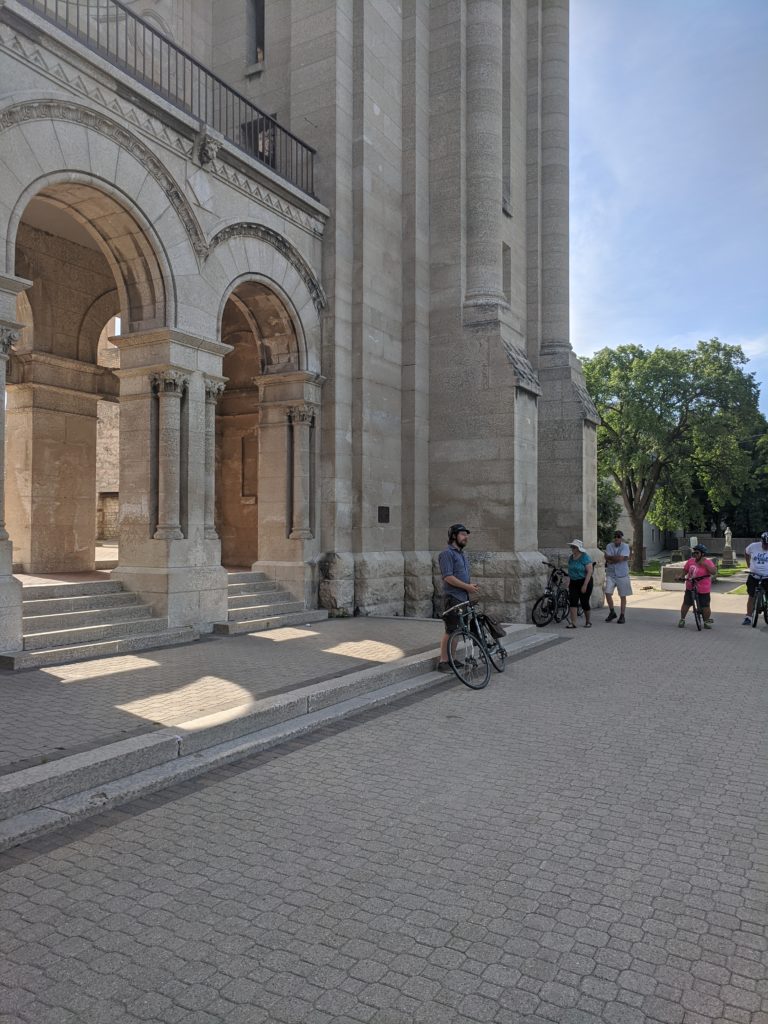
This cathedral is the site of one of the earliest churches in the Settlement: A log chapel first built by missionaries in 1818. In 1832 a wood cathedral was built, which burned in 1860. It was rebuilt in stone in 1862, and replaced by the large ruined cathedral in 1906. This also burned in 1968, and was replaced by the current smaller building. Many notable people are buried in the cemetery, including
Louis Riel (jr. & sr.), Jean-Baptiste Lagimodiere, Marie-Anne Gaboury and Norbert Provencher.
3 – Fort Gibraltar

From 1670 until 1870 this place was known as Rupert’s Land, and was owned by the Hudson’s Bay Company. Their domain stretched from northern Quebec to Nunavut, through Manitoba to Alberta, and into the northern US. The area was populated primarily by Indigenous peoples, some European traders, and the descendents of both: the Metis.
The fork of the Red & Assiniboine offered access to most of North America by river, and it has acted as a hub of economic and cultural exchange for over 4,000 years. Its importance only increased during the fur trade.
The current fort is a reproduction that was built in 1970 by the Festival du Voyageur. It is
constructed in historically accurate fashion, and serves as a representation of the fur-trade era wood forts which were once common.
The original fort was built in 1809 by the North-West Company, and was located on the opposite bank near the present day Forks. It was destroyed in 1816 during the Pemmican Wars, was rebuilt the next year and renamed Fort Garry in 1821. It was again destroyed in the flood of 1826, and finally rebuilt along Main Street — becoming Upper Fort Garry.
4 – Elzéar Goulet Monument

For information on Parc Elzéar-Goulet and the Elzéar Goulet monument, please check the entry for him on the Manitoba Historical Society website.
5 – Point Douglas
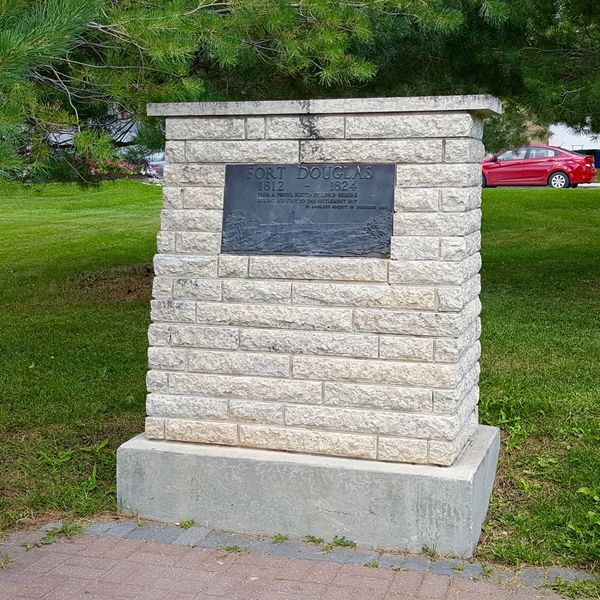
A small stone monument marks the location of Fort Douglas with a sketch drawn by Lord Selkirk. The Point Douglas area arose around the fort. This was the main center for the HBC’s trade, and it quickly became the commercial and industrial hub of the city. This area was a center of English, Scottish & Irish settlement, and many of the wealthiest homes were located in the Point itself.
This Waterfront area was the original Downtown, which quickly expanded outwards from the docks to the area of Main St. and beyond. Old Market Square used to be a massive open-air market, and the surrounding Exchange District was a hub for trade. In the 1880s Winnipeg was called the “Chicago of the North” and was one of the fastest growing cities in North America. Only a few years later we experienced a sharp economic decline, and this combined with a massive increase in immigration led to crowding, poverty and urban decay in many of these old areas.
6 – Scot’s Monument

This monument commemorates the Selkirk Settlers, the earliest organized group of European settlers. They arrived here in 1812 under Lord Selkirk’s scheme to establish the Red River Settlement.
Lord Selkirk was a minor Scottish nobleman who used his wealth and connections to secure a controlling interest in the Hudson’s Bay Company. The HBC then gave him an immense land grant: 300 000 square km centered around the Forks of the Red and Assiniboine Rivers. He gathered groups of impoverished Scottish farmers, who had been forced from their own land by the British government during the Highland Clearances. Armed with promises of a better life, he shipped them here where they met brutal winters, warfare and tremendous hardship.
Lord Selkirk himself only visited the Settlement once in 1817. He arrived with a group of Swiss mercenaries after the 1816 Battle of Seven Oaks, which nearly destroyed his colony. While here he negotiated a treaty with five Indigenous leaders: Chief Peguis, Mache Whesab, Mechkaddewikonaie, Kayajieskebinoa and Oukidoat.
Instead of buying the land Selkirk agreed to a perpetual rental. He promised to pay the chiefs 100 pounds of tobacco each year in exchange for the right to settle strictly along the rivers. This payment was not made even a single time and the colonists soon expanded. The treaty is poorly understood today because it has not been in Canada’s interests to acknowledge it. In many ways it asserts that this land does in fact belong to its Indigenous peoples, and that the descendants of European settlers are merely tenants who are 200 years behind on their rent.
7 – Ross House Museum
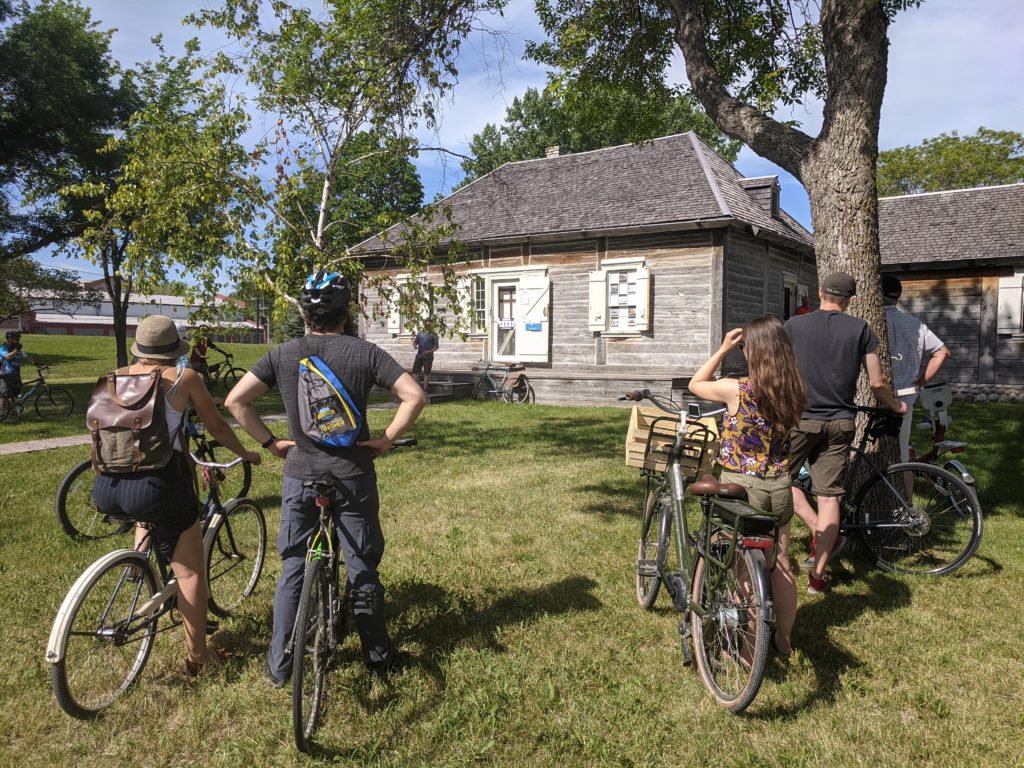
Built by the family of William & Jemima Ross in 1854, it was originally located on the banks of the Red River at the end of Market Avenue. The Ross farm covered most of today’s Exchange District, and Jemima donated the land used for City Hall & Old Market Square to the City of Winnipeg.
It is another example of Red River frame style architecture, and you can clearly see how the logs have been fit together, almost like Lego pieces. Their home might look like a humble log cabin to us, but it was far beyond the means of most families at the time. Contemporary writers described Ross House as ”One of the prettiest in the Settlement”.
The Ross family were very influential in the Settlement. William’s father Alexander was a Scottish fur trader who became a sheriff and historian. Their mother Timentwa was from the Syilx Nation in the Okanagan Valley. Their brother, James Ross, was seen as the leader of the English-speaking Metis (or Half-Breed) community. He worked closely with Louis Riel and was instrumental in the founding of Manitoba.
In 1949 the Manitoba Historical Society moved this home to the area of Higgins and Main and opened it as a museum. In 1984 it was again moved to its present location and fully restored. It served as the first public, official post office in Western Canada, as William Ross was appointed the first Postmaster in 1855.
The museum is open for visitors in the summer months.
8 – Barber House

Built between 1862-67 by Edmund Barber, an American immigrant who ran a store in Point Douglas. It was occupied by the Barber family until 1974. This is another example of Red River Frame style architecture, but very little of this is visible in the exterior we see now. The building was nearly destroyed by arson in 2010, but has been restored by dedicated community members. It now holds a seniors’ centre and daycare.
During the 1870 Red River Resistance, a man named John Christian Shultz led the anti-Riel faction and gathered weapons to oppose him. Shultz eventually decided to flee the Settlement instead of fighting, and hid here in the home of his business partner. Barber then smuggled him out of the Settlement. Schultz was a businessman who initially practiced medicine without any real training.. He was arrested for “improper business practices” and exiled from the Settlement after killing a woman during surgery. He returned and became known as the owner of the Nor’Wester, the first newspaper in Manitoba. Shultz made powerful friends and was appointed Lieutenant Governor in 1888, while Barber was largely forgotten.
Be careful on the trail ahead! There can be blind corners, loose gravel and a steep uphill. In the spring the path may be washed out–take the detour across Main St in high water.
Kildonan
While the Red River has always been the heart of Winnipeg, it has also been its greatest danger. The entire Settlement was destroyed by an apocalyptic flood in 1826, while other disastrous floods in 1852, 1950, and 1997 wreaked havoc on the city.
Kildonan was the oldest area of organized settlement, and was established with the arrival of the Selkirk Settlers in 1812. They chose this area because a forest fire had recently swept along the west bank of the river, leaving the land easily cleared for agriculture.
We’ve already touched on the importance of the Metis people in Manitoba’s history, but this is a point worth revisiting. Although Metis is generally accepted as a blanket term today, many of these people would never have identified themselves this way. Historically people of mixed Scottish or English and Indigenous descent were known as “Half-Breeds”. These people had an entirely distinct language (called Bungee), religion and culture from the French Metis, and the groups were often at odds with each other politically. Both groups suffered much of the same marginalization and discrimination, but it was often easier for them to blend in with the dominant British culture. Perhaps as a result, the Bungee language is dead, and these people are rarely recognized as a distinct identity today.
9 – St. John’s Anglican Cathedral
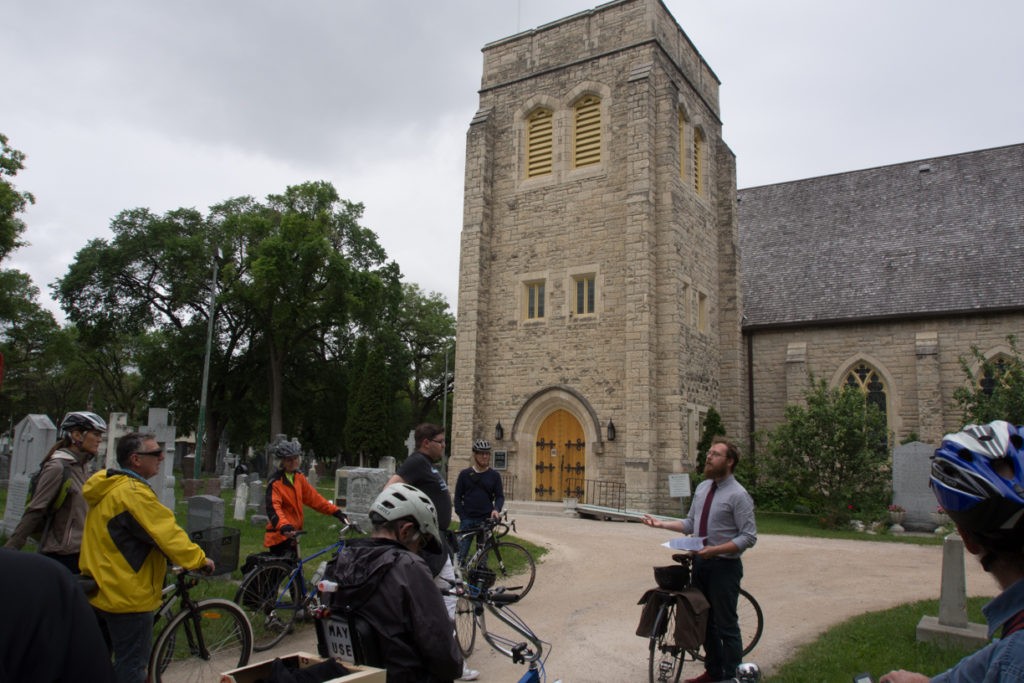
The Cemetery was established in 1812 by the Selkirk Settlers, and is the oldest graveyard in Winnipeg. Many of the most prominent english citizens of the Red River Settlement are buried here. Examples include John Inkster, Nahoway Sinclair, Sir Hugh John MacDonald (son of John A Macdonald), Archbishop Robert Machray, J.H. Ashdown and John Christian Schultz. The cathedral has a self-guided tour of the cemetery on their website.
St. John’s was established in 1820, making it the oldest Anglican parish in Western Canada. The first church on the site was built in 1822 and destroyed in the disastrous 1826 flood. The present cathedral is the fourth on the site, and was built in 1926 with stone salvaged from the previous building.
The Inkster family (who owned our last stop, Seven Oaks) were major patrons of St. John’s. They served as Rector’s Wardens, organists, and Colin Inkster is even featured in one of the church’s stained glass windows.
10 – Battle of Seven Oaks Monument (Main St @ Rupertsland Blvd)

The 1816 Battle of Seven Oaks was likely the most significant armed conflict to occur in Manitoba. Tensions grew between the rival NWC and the HBC after the Settlement was established in 1812, eventually culminating in the Pemmican Wars.
In 1814 the first Governor of Red River issued a proclamation limiting the trade of pemmican. This threatened the primary food source of the NWC fur-trading brigades, as well as the primary economic activity of the Metis buffalo hunters. For months, bands of men from both companies raided rival trading posts and forts, stealing supplies and taking hostages. Forts were even burned, but no lives were lost. Finally on June 12, 1816, HBC forces from Fort Douglas met NWC men led by Cuthbert Grant near this location. The ensuring battle left 22 people dead, including the governor of the Red River Settlement. The NWC side subsequently chased away the remaining settlers, and destroyed most of the Settlement. This monument to the battle was built by Colin Inkster & the Manitoba Historical Society in 1897, and is the oldest historical marker in Western Canada. Check out the sign boards to learn more.
11 – Bleak House (1637 Main)

Built in 1874 for the Honourable Colin Inkster, son of John Inkster. Colin was the Sheriff of Manitoba for 51 years, a member of the first Legislative Council of Manitoba, and a founder of the Manitoba Historical Society. Colin was regarded as one of the toughest and most knowledgeable men in the Settlement. He skipped rope every morning for exercise and he wrote many memoirs about life at Red River. In his youth he hunted bison on horseback and traded across the plains, but in his later years he mixed with the political elite and owned the first automobiles in Kildonan. Colin died following a fire at his hunting lodge, while he was duck hunting at the age of 91.
His home is built in a more refined Red River frame style. It is made of logs but covered with siding and includes a verandah addition. It was occupied by the family for 99 years, until 1973, and it is currently a seniors’ center. The source of its odd name is unclear, but it may be a reference to a Charles Dickens novel. Colin’s home was built on a small corner of the Inkster family property that once held a mill. Their lot was approximately 5 blocks wide and 2 miles long, running from the Red River to today’s McPhillips Street
12- River Lot (Scotia St @ Rupertsland Blvd)
On the other side of the river you can see Fraser’s Grove Park. In the earliest days, many families owned land on both sides of the river. This western side was used for agriculture, while the forested east side provided wood. This space also illustrates the long, narrow river lots which were originally surveyed for farmland in this area.
The 1817 Peguis-Selkirk treaty allowed settlement only around the Forks and along the banks of the Red and Assiniboine rivers. The settlement was only allowed to extend 2 miles from the river, so this became the depth of one lot. This goes a long way to explain the urban sprawl we face today. The terms of the treaty were never truly honoured by the settler side, but the earliest surveys did conform to the limits that the treaty established.
This system also ensured that each landowner had access to both water and arable land. The Canadian government intended to re-survey this land according to the square “block” system used in Ontario, cutting many families off from fresh water sources. Metis families were disproportionately affected, and this became one of the major issues leading to the 1869-70 Red River Resistance and the establishment of Manitoba.
13 – Seven Oaks House Museum

Home to the Inkster/Sinclair family and the oldest remaining house in Winnipeg. The main house was built from 1851-53, and occupied by the family until 1912. The small adjacent General Store building is the family’s original home, and represents a very early style of Red River Frame construction. It was built in the mid-1830s and is the oldest building of any kind in Winnipeg.
The home was restored by the community in the 1950s, and has been open as a museum since 1958. The museum depicts the life of an affluent, politically active farming family during the Red River Settlement period. John Inkster was one of the first free traders in the Settlement, operated the first steam mill in Western Canada, ran one of the first (unofficial) post offices, and served on the Council of Assiniboia (the Settlement’s local government). John’s wife, Mary Sinclair, and their 9 children were all prominent members of the Settlement’s Scottish-Metis community.
The museum is open to visitors in the summer. You can find a detailed, self-guided tour of the site at www.sevenoakshouse.ca/tour
The Pedal into History project was supported by contributions from the Province of Manitoba through the Heritage Grants Program., the City of Winnipeg, and Seven Oaks House Museum. We are grateful for their support.

